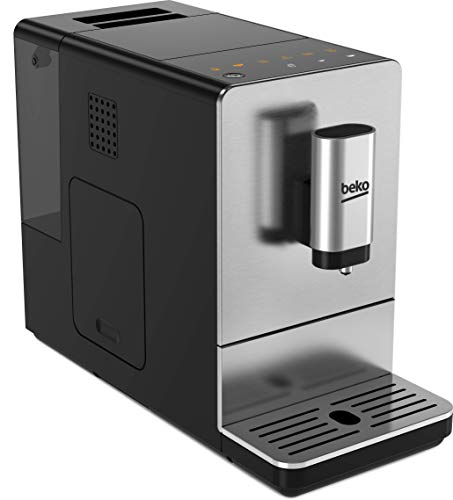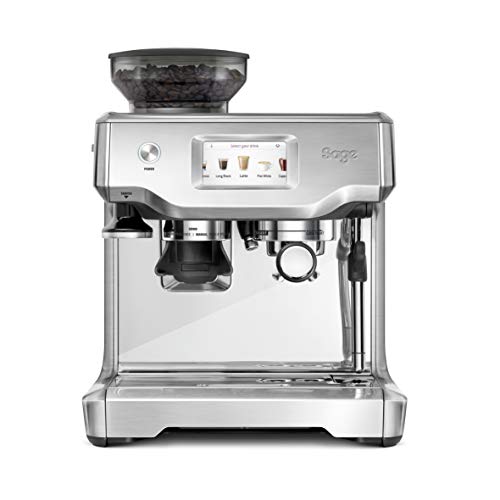10 Meetups About Bean Coffee Machine You Should Attend
페이지 정보

본문
 Coffee Bean Coffee Machines
Coffee Bean Coffee MachinesWith a coffee machine beans bean maker allows you to enjoy fresh, delicious whole-bean espresso that is prepared according to your preferences. The machine grinds, measures, and tamps and pushes hot water into the grounds to create rich, coffee bean to cup delicious coffee.
These machines have several advantages over pod machines, including less environmental waste and a simple to use. The machine is fully automated and can be operated by a simple press of a button.
The following are some alternatives to the word "grind"
The kind of grind you choose is vital to making a great cup of coffee. The size, shape and consistency are all crucial. When beans are not properly ground, they can cause the water to flow too fast through the ground and result in under extraction of flavor or excessive extraction of bitterness.
A good grinder should have various sizes of grind to allow you to choose different brewing methods. It is essential to try different sizes of grind because this could have a significant impact on the taste of your coffee. The smaller sizes of grinds are perfect for espresso and French press, while the larger, more coarsely ground particles are best bean to cup coffee beans for brewing in an immersion vessel such as the Chemex or Moka pot.
If you're looking to make an even more delicious cup of coffee, you can try roasting your own beans, then grinding them right before making the coffee. This will enhance the flavor and aroma and create an excellent cup of coffee every time. It is also essential to store the beans ground in an airtight container in a cool, dark place to preserve their freshness and flavor.
Commercial coffee bean to cup machines offer unparalleled convenience and allow you to enjoy barista-quality coffee at the push of the button. These machines can handle everything, from preparing coffee beans to tamping. They are a great choice for busy offices and cafes.
They begin by grinding your choice of beans to a specific grind size. They can be configured to match your preferred brew method and are able to be programmed to serve the desired amount of cups at a time. Some machines will automatically compact the grounds to ensure the best extraction.
A bean-to-cup machine typically includes a large hopper you can fill with whole beans. The machine will then grind and disperse the right amount of beans to suit your chosen brew method. The machines usually display to show you the grind size and dose chosen, as well as the total number of drinks it's set to make.
Extraction
When a coffee bean is ground it breaks down into smaller pieces, referred to as particles. The size of the particles can influence the extraction process as well as the taste of the final cup. In a bean to cup machine, the size of the beans is controlled prior to making coffee so that it lines up with the extraction method required by the machine. This allows you to make a fantastic cup of espresso each time, without the need for barista skills.
The brew duration in a machine that is bean to cup coffee machine reviews to cup can be controlled to ensure exactly the amount you wish to drink. This is a huge advantage over pod machines, which often offer less control and could result in weaker or bitter tasting coffee. Bean-to-cup machines allow you to control not only the brew time but also the temperature of the water. This allows you to decide how strong your coffee will be.
Extraction is a delicate process that relies on the proper proportion of particle size, dose and tamping pressure. A coffee that is not extracted properly could be caused by any of these variables. Coffee that is not extracted properly will taste sharp and sour, while over-extracted coffee will taste bitter and dry.
To ensure that your coffee is extracted correctly, it is essential to invest in a top quality grinder and use the right type of beans. Light roasts are often an unwise choice when using espresso machines or fully automated machines as the short extraction time could leave the coffee lacking body and flavor. Darker roasts with an extremely high Robusta content, such as our Jhai (100 percent Robusta) or Tiga Terra are ideal for these types of machines, coffee bean to cup as they provide richer flavors and stronger bodies.
 The final decision between a bean-to cup machine and a pod coffee machine comes down to personal preference and convenience. Pod coffee machines provide an easy way to make coffee and tea, but they're generally less efficient than a bean-to-cup device and can produce significant waste due to the disposal of the discarded pods.
The final decision between a bean-to cup machine and a pod coffee machine comes down to personal preference and convenience. Pod coffee machines provide an easy way to make coffee and tea, but they're generally less efficient than a bean-to-cup device and can produce significant waste due to the disposal of the discarded pods.Dispensing
The use of whole beans eliminates the need for pods, which can save you money and offering more flexibility. This also means that you will have to perform more maintenance and cleaning on your machine than you would with pod-based machines.
Fortunately, these machines have been made with low maintenance in mind and many include features to make this task easier. For example, most bean-to-cup coffee makers feature automatic rinsing and cleaning cycles which makes it simple to keep your machine in good condition without disrupting your daily routine.
The ability to add hot, steamed milk for coffee beverages is another useful feature. This helps your team members customize their drink to match their preferences and preferences while boosting productivity. It's also a great way to show that you care about the well-being of your team. In fact it has been proven scientifically that coffee beans machine for home can boost dopamine and norepinephrine levels, which enhances focus and motivation in the workplace.
Some models offer additional options for beverage customization, like texturizing milk for cappuccinos and lattes. This is a major selling point for baristas who may have limited time to make each cup of coffee.
The size of the water tank as well as the bean hopper are crucial aspects to look out for when selecting a top-quality bean-to cup coffee maker. The water tank determines the amount of time that the machine can run before it must be refilled and the size of the hopper will affect the frequency at which you'll need to replenish the beans. In general, the greater capacity of each one, the less frequently you'll have to replenish.
Before you purchase a bean-to-cup coffee maker, carefully consider the type of beans you'll be using since different grind sizes affect the taste and consistency of each cup. You'll also want to check out the machine's programmable options that let you customize your drinks to make them exactly how you want them to be.
In some instances, the dispensing spouts of your coffee maker may get blocked by ground coffee residue and other debris left after grinding. To avoid an inconsistent and slow flow that could result in an insufficient amount of grounds for coffee, the spouts must be cleaned regularly. This could be due a coarser grind setting, too oily or dried beans, or the lack of regular cleaning.
Cleaning
Cleaning coffee machines is a vital component of maintaining them. It helps prevent the build-up and accumulation of residues that could negatively affect the taste and quality. Regular cleaning ensures that the machine is in top condition and reduces the possibility of a breakdown which could result in an expensive repair bill. Many bean-to cup coffee beans machine for home machines come with a built-in cleaning cycle that flushes through pipes to clean the brewing unit. Others will have separate milk side cleaning cycle to ensure that both the spouts have been clean.
During the installation process, a reputable rental company will train their employees on how to clean and maintain the equipment. This will help reduce confusion and ensure that the steps are properly followed. Clear instructions and a thorough understanding of the process will help you avoid costly repairs or low-quality drinks.
It is best to wash the carafe, permanent filter, and brew basket following each use in hot soapy water, or in the dishwasher if marked as safe for this. It is also a good idea to run two to three times with fresh water without K cups or ground coffee in the machine between uses. This will help get rid of any oily residue, and will stop the growth of mould, bacteria or yeast.
For single-serve or pod coffee machines it is a good idea to clean the machine thoroughly and descale once every four weeks. A vinegar solution is typically employed for this. Add up to four cups of vinegar to the reservoir and then run the machine through a brewing cycle. After the cycle is completed, rinse and descale according to the manufacturer's instructions. Run several cycles of clean water to eliminate any vinegar odor.
Commercial machines are equipped with a telemetry system which logs every cleaning cycle. Your supplier or you can review this data to make sure that the machine is being cleaned regularly. This can also alert to any moving parts that have become seized or stuck, which could require more detailed repair and maintenance.
- 이전글See What Treadmill With Desk Tricks The Celebs Are Using 25.02.03
- 다음글10 Things Your Competitors Learn About Tool Bundles 25.02.03
댓글목록
등록된 댓글이 없습니다.
